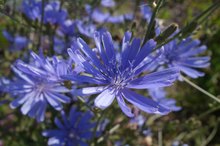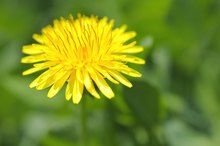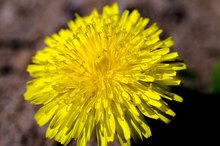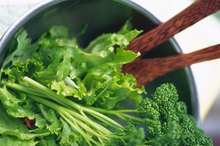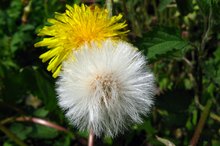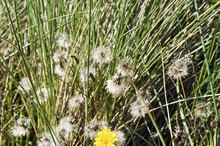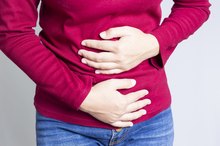What does fact checked mean?
At Healthfully, we strive to deliver objective content that is accurate and up-to-date. Our team periodically reviews articles in order to ensure content quality. The sources cited below consist of evidence from peer-reviewed journals, prominent medical organizations, academic associations, and government data.
The information contained on this site is for informational purposes only, and should not be used as a substitute for the advice of a professional health care provider. Please check with the appropriate physician regarding health questions and concerns. Although we strive to deliver accurate and up-to-date information, no guarantee to that effect is made.
What Are Dandelion & Burdock?
Burdock is a weed, related to the daisy, originally from Northern Asia and Europe. The plant is identified by green and white heart-shaped leaves. Some people eat it as a vegetable, but it is also used as an herbal remedy for a number of ailments. You have probably seen the dandelion weed with its yellow flowers that is common in North America, Europe and Asia. You might not know that this lawn weed is used for medicinal purposes as well. However, be sure to talk to your doctor before using these herbs as a treatment method.
If you are experiencing serious medical symptoms, seek emergency treatment immediately.
Uses of Dandelion
Dandelion provides vitamins C, D, A and B complex, and the minerals potassium, iron and zinc. Both the roots and leaves are used for medicinal purposes. The leaves are diuretic and the roots help digestion and the health of the liver and gallbladder. Dandelion has often been used for heartburn, kidney disease, upset stomach, appendicitis, diarrhea, liver disorders and high blood pressure. It is also used for pain and inflammation in the skin, muscles and joints. However, more research is needed to determine if dandelion is effective as a medicinal treatment.
- Dandelion provides vitamins C, D, A and B complex, and the minerals potassium, iron and zinc.
- The leaves are diuretic and the roots help digestion and the health of the liver and gallbladder.
Safety of Dandelion
Chicory Root Vs. Dandelion Root
Learn More
As a medicinal treatment, MedlinePlus standards rate dandelion as “possibly safe.” Avoid dandelion if you are pregnant, breast-feeding or have an allergy to ragweed, daisies or chrysanthemums, since you might also experience a reaction to dandelion. Talk to your doctor before using dandelion, especially if you are taking lithium, antibiotics, water pills or medications that are broken down by the liver, as dandelion can counteract these medications. Also, dandelion is a diuretic so you should avoid it if you are dehydrated.
- As a medicinal treatment, MedlinePlus standards rate dandelion as “possibly safe.” Talk to your doctor before using dandelion, especially if you are taking lithium, antibiotics, water pills or medications that are broken down by the liver, as dandelion can counteract these medications.
Uses of Burdock
The root is the part of the burdock plant used for medicinal purposes. Burdock contains dietary fiber and shows antioxidant, antibacterial and anti-inflammatory properties. Like dandelion, it is a diuretic 1. It has also been used to clean the blood of toxins and seems to relieve skin problems like acne, psoriasis and eczema.
- The root is the part of the burdock plant used for medicinal purposes.
- It has also been used to clean the blood of toxins and seems to relieve skin problems like acne, psoriasis and eczema.
Safety of Burdock
Herbs That Remove Ascites in the Abdomen
Learn More
Like dandelion, stay away from burdock if you are pregnant or breast-feeding, or if you are allergic to ragweed, chrysanthemums or daisies. Burdock is a diuretic, like dandelion, so stay away from it if you are dehydrated. Also, burdock can interact negatively with water pills and diabetes medications. Avoid high doses of burdock because more research is needed to determine if it is safe, and talk to your doctor before using it.
- Like dandelion, stay away from burdock if you are pregnant or breast-feeding, or if you are allergic to ragweed, chrysanthemums or daisies.
- Burdock is a diuretic, like dandelion, so stay away from it if you are dehydrated.
Related Articles
References
- University of Maryland Medical Center: Dandelion
- Clare B, Conroy R, Spelman K. The Diuretic Effect in Human Subjects of an Extract of Taraxacum officinale Folium over a Single Day. J Altern Complement Med. 2009;5(8):929-34. doi:10.1089/acm.2008.0152
- Yang Y, Li S. Dandelion Extracts Protect Human Skin Fibroblasts from UVB Damage and Cellular Senescence. Oxid Med Cell Longev. 2015;2015:619560. doi:10.1155/2015/619560
- Rasmussen A, Jacob SE. Dandelion: An Important Allergen in Atopic Children. Dermatitis. 2017;28(2):166. doi:10.1097/DER.0000000000000262
- Wirngo F, Lambert M, Jeppesen P. The Physiological Effects of Dandelion (Taraxacum Officinale) in Type 2 Diabetes. Rev Diabet Stud. 2016;13(2-3):113-31. doi:10.1900/RDS.2016.13.113
- Cai L, Wan D, Yi F, Luan L. Purification, Preliminary Characterization and Hepatoprotective Effects of Polysaccharides from Dandelion Root. Molecules. 2017;22(9):1409. doi:10.3390/molecules22091409
- Ovadje P, Ammar S, Guerrero JA, Arnason JT, Pandey S. Dandelion root extract affects colorectal cancer proliferation and survival through the activation of multiple death signaling pathways. Oncotarget. 2016;7(45):73080-73100. doi:10.18632/oncotarget.11485
- Martinez M, Poirrier P, Chamy R, et al. Taraxacum officinale and related species-An ethnopharmacological review and its potential as a commercial medicinal plant. J Ethnopharmacol. 2015;169:244-262. doi:10.1016/j.jep.2015.03.067
- Jargin SV. Soy and phytoestrogens: possible side effects. Ger Med Sci. 2014;12:Doc18. doi:10.3205/000203
- American Botanical Council. Herbal Medicine: Expanded Commission E.
- Domitrović, R.; Jakovac, H.; Romić, Z. et al. Antifibrotic Activity of Taraxacum Officinale Root in Carbon Tetrachloride-induced Liver Damage in Mice. J Ethnopharmacol. 2010 Aug 9;130(3):569-77. doi:10.1016/j.jep.2010.05.046.
- You, Y.; Yoo, S.; Yoon, H. et al. In Vitro and In Vivo Hepatoprotective Effects of the Aqueous Extract From Taraxacum Officinale (Dandelion) Root Against Alcohol-Induced Oxidative Stress. Food Chem Toxicol. 2010 Jun;48(6):1632-7. doi:http://dx.doi.org/10.1016/j.fct.2010.03.037.
Writer Bio
Sharon Therien has been writing professionally since 2007. She specializes in health writing and copywriting for websites, blogs and businesses. She is a Certified Yoga Teacher and a Reiki Master with a Certificate in Fitness and Nutrition. Therien has a Master of Arts in sociology from Florida Atlantic University.
